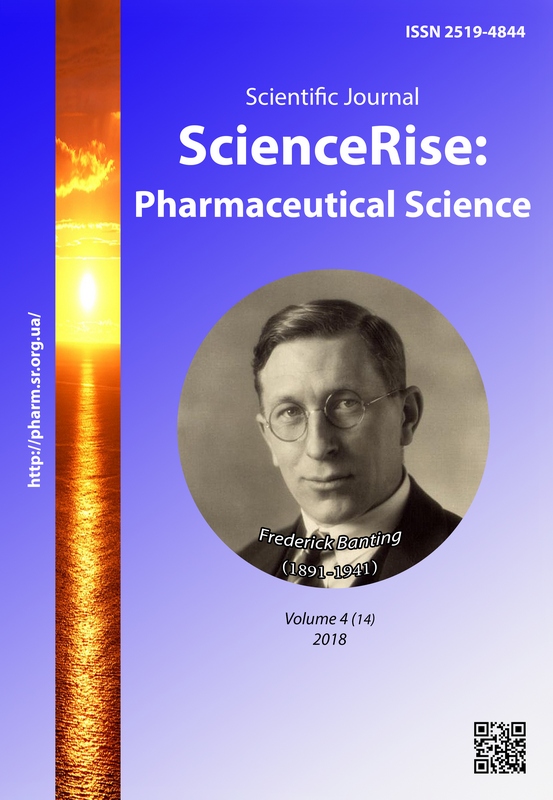Scientific and practical substantiation of directions of mutual cooperation of higher educational institutions with employers of pharmaceutical sector of health care industry
DOI:
https://doi.org/10.15587/2519-4852.2018.141393Keywords:
pharmacy, education, employers, forms of cooperation, practical training, employment, labor marketAbstract
The aim is to study, summarize and develop the directions of mutual cooperation between higher education institutions with employers of the pharmaceutical sector of the healthcare industry, which will allow making the preparation of competitive competent specialists in accordance with the requirements of the labor market.
Methods: to achieve the aim, methods of scientific analysis were used, in particular generalization, comparison, system and logical methods. Graphic analysis is used to visualize the generalized results of the expert survey.
Results: scientific and practical approaches to determining directions of mutual cooperation between higher education institutions and employers of the pharmaceutical sector of the healthcare industry are substantiated. Modern directions of cooperation between higher education institutions and employers are presented, which contribute to the improvement of the organizational and methodological foundations of interaction, the optimization of the content of education and the educational process, the improvement of the quality of practical training and employment of graduates, the development of research and innovation infrastructure. The forms of cooperation of the National University of Pharmacy (NUPh) with pharmacy institutions and pharmaceutical enterprises are systematized, the introduction of which will improve the quality of practical training of pharmacists.
Conclusions: based on the results of the expert survey of pharmacy specialists, it is determined that the most significant motivations for the cooperation of the National University of Pharmacy with the employers of the pharmaceutical sector of the healthcare sector are the training of specialists in accordance with the labor market needs and access to skilled labor resources, and effective forms of cooperation - mentoring and training. Based on the results of the research on the specifics and forms of cooperation, the authors carried out their systematization and defined the areas of mutual cooperation between higher education institutions and employers, using the example of the NUPh, the implementation of which contributes to improving the quality of practical training for future pharmacists and the formation of competitive graduates in accordance with labor market requirementsReferences
- Yakisna vyshcha osvita: rol partnerstv. Available at: http://csr-ua.info/csr-ukraine/wp-content/uploads/2014/04/Research_Forum_Business-and-Universities.pdf
- Nazustrich VIII Natsionalnomu zizdu farmatsevtiv Ukrainy. Robotodavtsi ta universytety, yednaitesia! Available at: https://www.apteka.ua/article/359304
- Ohar, S. V., Barkovska, O. Ya. (2018). Naukovo-teoretychni zasady formuvannia sotsialnoho partnerstva zakladu vyshchoi osvity z robotodavtsiamy. Farmatsevtychna nauka ta praktyka: problemy, dosiahnennia, perspektyvy rozvytku: materialy II nauk.-prakt. internet-konf. z mizhnar. uchastiu. Kharkiv: NFaU, 415.
- The Global University Employability Ranking 2016. Available at: https://www.timeshighereducation.com/features/global-university-employability-ranking-2016
- Šehu, E., Dobrić, D. (2014). University-Employer Cooperation. Beijing Law Review, 05 (04), 272–282. doi: https://doi.org/10.4236/blr.2014.54026
- Rakovska, N., Pavlin, S., Melink, M. (Eds.) (2012). Assessment of cooperation between higher education institutions and employers in Europe. EMCOSU, 72.
- Pavlin, S. (2015). Considering University-Business Cooperation Modes from the Perspective of Enterprises. European Journal of Education, 51 (1), 25–39. doi: https://doi.org/10.1111/ejed.12163
- Pollard, E. et. al. (2015). Understanding employers’ graduate recruitment and selection practices. Institute for employment studies, 248.
- Closing the skills gap: companies and colleges collaborating for change (2014). A report from The Economist Intelligence Unit, 28. Available at: https://www.luminafoundation.org/files/publications/Closing_the_skills_gap.pdf
- Thematic University-Business forum: Forum Report. Available at: http://www.ubforum-basquecountry.eu/
- Horodetska, V. I., Lebedynets, V. O., Kovalenko, S. M. (2013). Vyznachennia ta analiz vymoh robotodavtsiv do fakhivtsiv z upravlinnia yakistiu u farmatsevtychnomu sektori. Upravlinnia, ekonomika ta zabezpechennia yakosti v farmatsiyi, 5, 25–31.
- Posylkina, O. V., Kotliarova, V. H. (2017). Stvorennia praktychno-orientovanykh form realizatsiyi vyshchoi farmatsevtychnoi osvity. Aktualni pytannia praktychnoi pidhotovky studentiv NFaU v Ukraini ta za kordonom: materialy nauk.-prakt. konf. z praktyky stud. NFaU ta Koledzhu NFaU. Kharkiv: NFaU, 61–63.
- Partnerstvo biznesu, derzhavy ta universytetiv yak stratehichnyi resurs innovatsiinoho rozvytku Ukrainy. Available at: http://www.edu-trends.info/higher-edu-partnership
- Tarasenko, S. I., Demchenko, M. Ye. (2017). Partnerstvo universytetiv ta biznesu: formy ta perspektyvy rozvytku v umovakh pidvyshchennia innovatsiynosti ekonomiky. Ekonomika i suspilstvo, 13, 302–308. Available at: http://www.economyandsociety.in.ua/journal/13_ukr/49.pdf
- Polozhennia pro Radu robotodavtsiv Vchenoi rady fakultetiv zi spetsialnosti «Farmatsiya» u Natsionalnomu farmatsevtychnomu universyteti, POL A 2.7-32-185, 2016 r.
- Partnerstvo z robotodavtsiamy yak stratehichnyi resurs rozvytku NFaU. Available at: https://www.apteka.ua/article/409162
- Havrysh, N. B., Barkovska, O. Ya. (2017). Doslidzhennia form spivpratsi Natsionalnoho farmatsevtychnoho universytetu z aptechnymy zakladamy ta farmatsevtychnymy pidpryiemstvamy Ukrainy. Relevant issues of modern medicine: the experience of Poland and Ukraine: international research and practice conference. Lublin, 119–122.
Downloads
Published
How to Cite
Issue
Section
License
Copyright (c) 2018 Oksana Barkovska, Svetlana Ogar’, Olha Rohulia

This work is licensed under a Creative Commons Attribution 4.0 International License.
Our journal abides by the Creative Commons CC BY copyright rights and permissions for open access journals.








